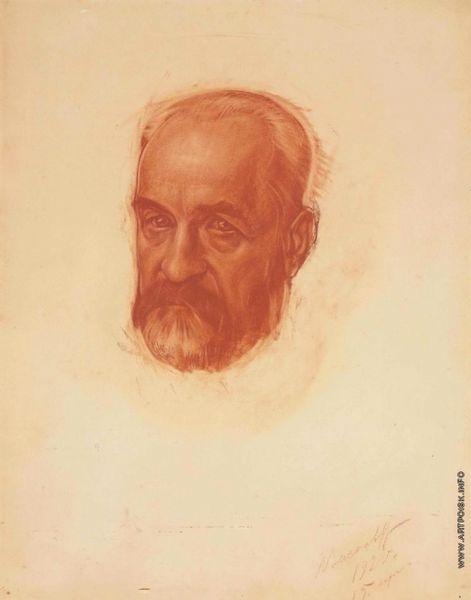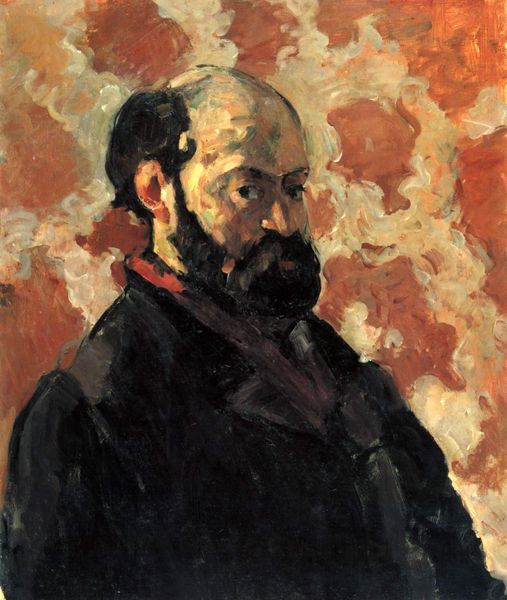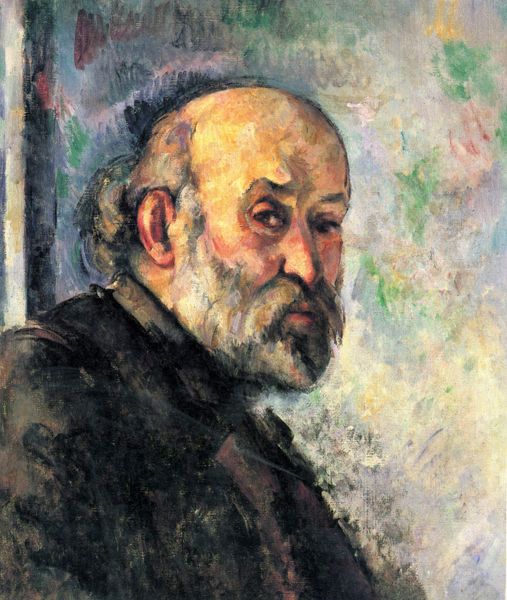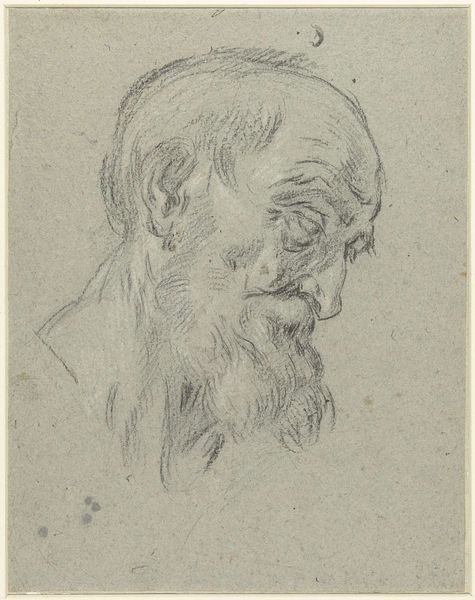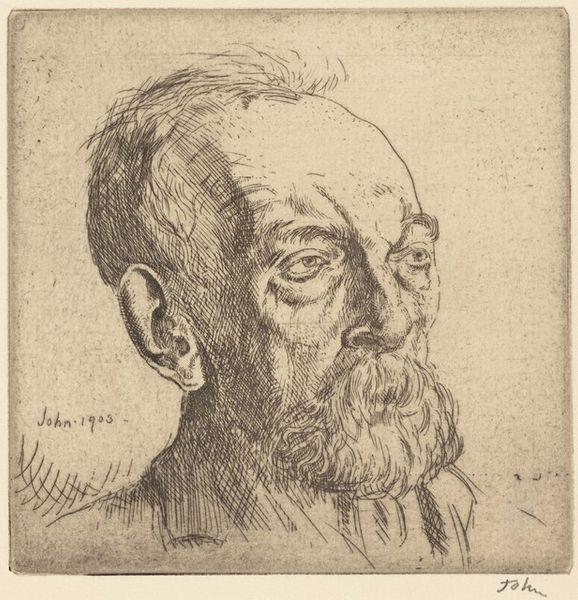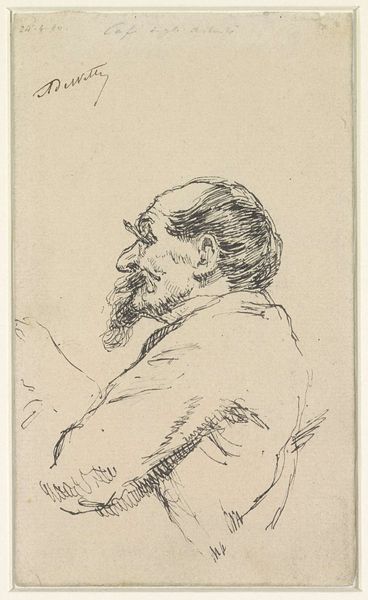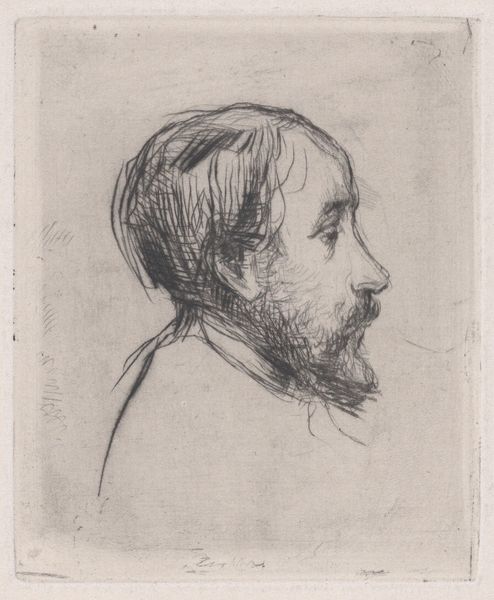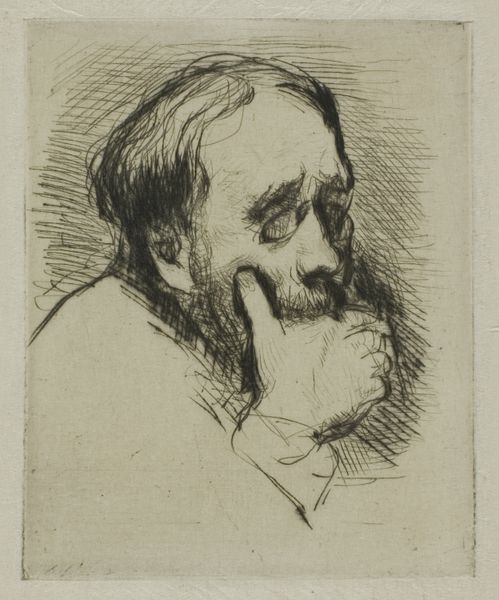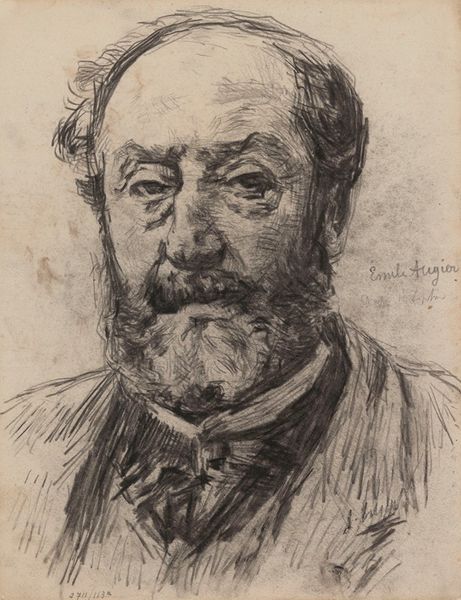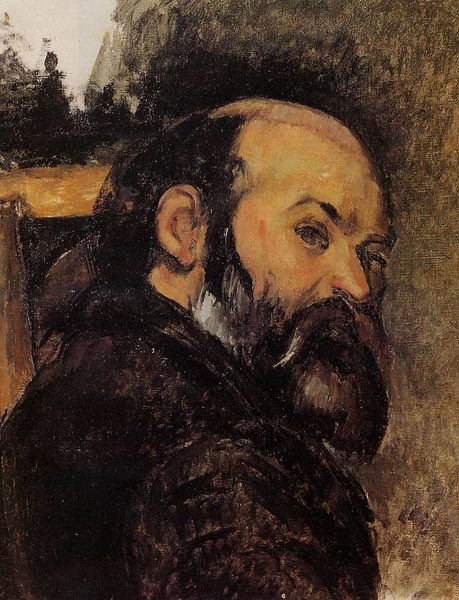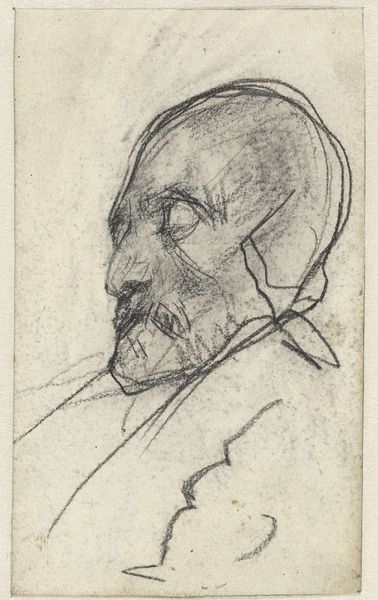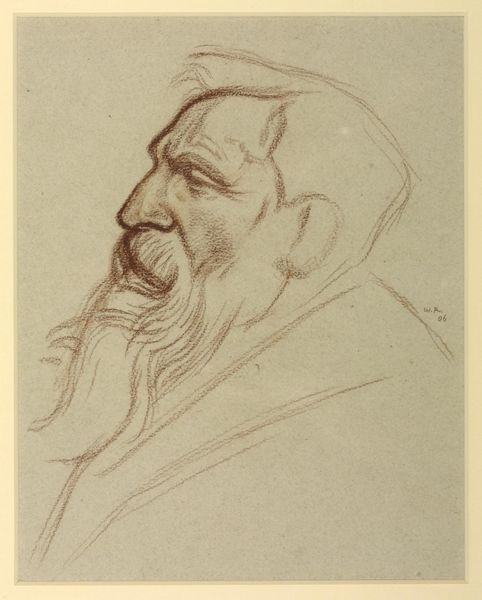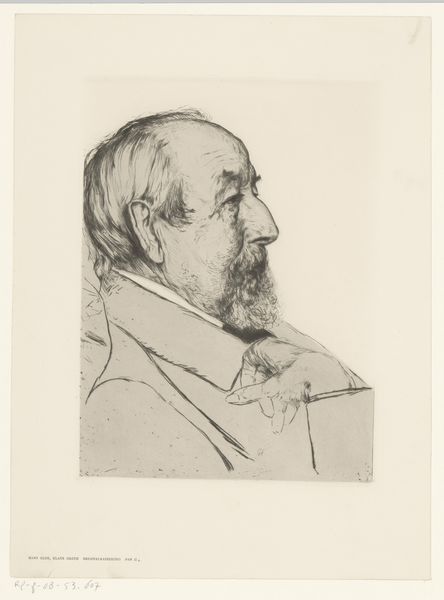
watercolor, impasto
#
portrait
#
self-portrait
#
watercolor
#
impasto
#
portrait reference
#
portrait drawing
#
facial portrait
#
post-impressionism
#
portrait art
#
fine art portrait
Dimensions: 26 x 22 cm
Copyright: Public domain
Curator: Standing before us is Paul Cézanne's Self-Portrait, completed around 1896. It resides in a private collection. What strikes you initially about this watercolor study? Editor: The way the light washes over the forms gives the image a transient, almost ghostly quality. There's a stark vulnerability to the subject; he seems caught mid-thought. Curator: Cézanne's watercolors are fascinating from a material perspective. He builds form through thin washes, a departure from the impasto of his oils, yet the process mirrors his architectural construction of space. Think of the labor involved in carefully layering these semi-transparent hues. Editor: The blues and grays dominating the palette certainly create a somber mood, though that could also be interpreted as intellectual intensity. Note how Cézanne renders form not through hard lines, but through tonal shifts and contrasts. Curator: Precisely, and those color choices also relate to material availability in the late 19th century. Consider the pigments that were easily accessible and affordable for artists like Cézanne—this affects everything from hue to the painting’s preservation. How do accessible pigments shape artmaking today? Editor: The visible paper beneath the washes isn’t simply incomplete. Rather, it’s active, allowing light to permeate the image, emphasizing the structural framework and pictorial depth. Curator: That conscious choice of paper, its weave, and texture, is integral to the final image. Cézanne embraced materials and techniques readily available. It allowed him to create works like this. The lack of ideal materials sometimes yields the most interesting results. Editor: True enough. It seems we are aligned. A last comment from me: what strikes me, also, is the palpable vulnerability, an unidealized representation of self, filtered through his distinct visual language. Curator: Indeed. Studying the historical and material circumstances broadens our interpretation. I walk away today newly understanding the significance of even ‘mundane’ artist supplies.
Comments
No comments
Be the first to comment and join the conversation on the ultimate creative platform.
